Viking Court
Jeff M. Sauve
“Times have changed,” declared the 1948 St. Olaf yearbook. With the post-World War II enrollment up from 100 to 900 men, both students and administration faced housing hardships. One solution was the creation in January 1947 of a “temporary” prefabricated housing complex and trailer camp below Old Main Hill. Dubbed Viking Court, the complex housed fifteen married couples and seventy-two single men in four crowded barracks that faced Lincoln Street.
Each married couple apartment had two bedrooms, a living room, kitchenette, bath and four closets. Heating and cooking stoves, natural gas, water heaters and ice boxes were provided. The barracks for the single men were divided into eight-man units each with four bedrooms, two study rooms and bath. Bunks, tables and chairs were provided.
However, common sense may not have been provided to all the Viking Court dwellers. On May 2, 1947, at 8:25 p.m.—only a few short months after the complex opened—the odor of natural gas permeated the air. One student thoughtlessly lit a match near unit 6, possibly causing the ignition.
The force of the explosion was heard miles away. The entire area near the campus was showered with stones and splinters. Three apartment units were blown sky-high. Fortunately only four people—including a baby found in the wreckage, pinned under a big timber—were slightly injured.
Some students on the Hill wondered about those veterans living below them—far removed from the college moral authority. Interaction included babysitting for their classmates or attending “scandalous parties” thrown by the single veterans. One student stated, “I’ve never been in a trailer. I’d like to see how two people can live in one of those things, and to think that some of them even have children.”
Children indeed! In May 1947, it was reported that the veterans’ families included twenty-six babies.
Parlaying their family status, the Viking Court dwellers took first place in the 1947 homecoming off-campus decorating contest with a banner proclaiming “Fathers of our College”—a play on the college song,”The College of our Fathers”—with a row of baby strollers complete with diapers. Another sign in the display stated, “The Lions, Their Mates, and Cubs Welcome You.”
Viking Court was intended as a five-year temporary solution, but the last remaining barracks were not removed until 1959. For Margaret and Ron Hinz, living in a trailer house in the late 1940s provided a warm, cozy and inviting place to relax with friends over a cup of coffee or a game of bridge, and a place they simply called home.
What a Gas!
May 2, 1947, at 8:25 p.m.—the odor of natural gas permeated the air. One student thoughtlessly lit a match near Viking Court unit 6, possibly causing the ignition. Creator Reuben Munson
So How Was Chem Class Today?
Viking residents gather. In May 1947, it was reported that the veterans’ families included twenty-six babies—a new dimension to the student body. Creator St. Olaf Student Annual, 1948 Viking yearbook
Picking Up the Pieces
The remains of Viking Court unit 6 after a gas line explosion on May 2, 1947. Creator Northfield News, May 15, 1947
No Room at the Inn
Viking Court residents Joyce and Bob Harter enjoy an evening meal in their cramped trailer house, ca. 1950. Source St. Olaf College Archives, Harter Family Photo Collection (scan provided to St. Olaf College Archives, 2010).
Homecoming for Future Oles!
The Viking Court dwellers took first place in the 1947 homecoming off-campus decorating contest with a banner proclaiming “Fathers of our College”—a play on the college song, “The College of our Fathers.”
Home Sweet Home
Viking Court, a post-World War II temporary housing complex for veterans (both married and single), was established in 1947 and finally removed in 1959.
Goodbye, Old Friend
Three-and-a-half-year-old David Jacobson watches as three of the barracks in Viking Court are being readied to be moved to Lakeville, Minnesota. Creator St. Olaf Alumni Magazine, Fall 1959
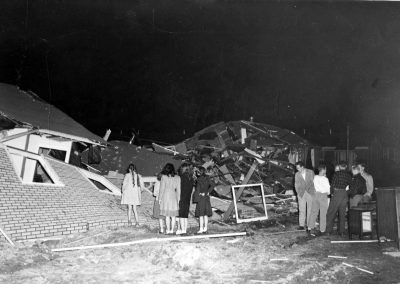
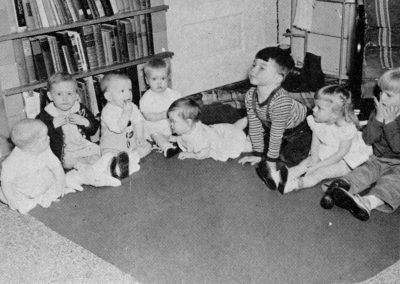
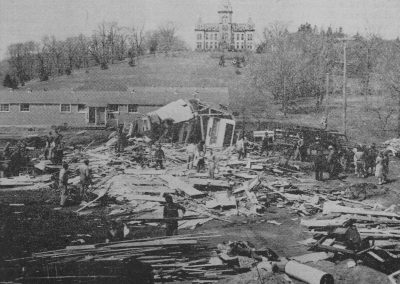
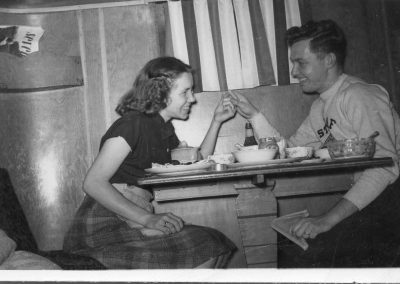
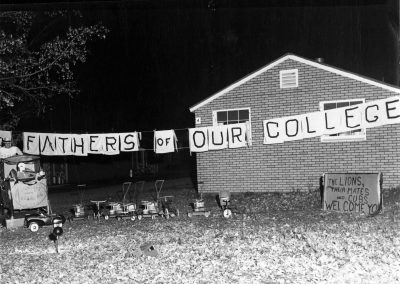

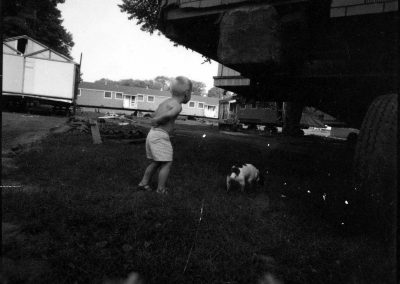

Recent Comments